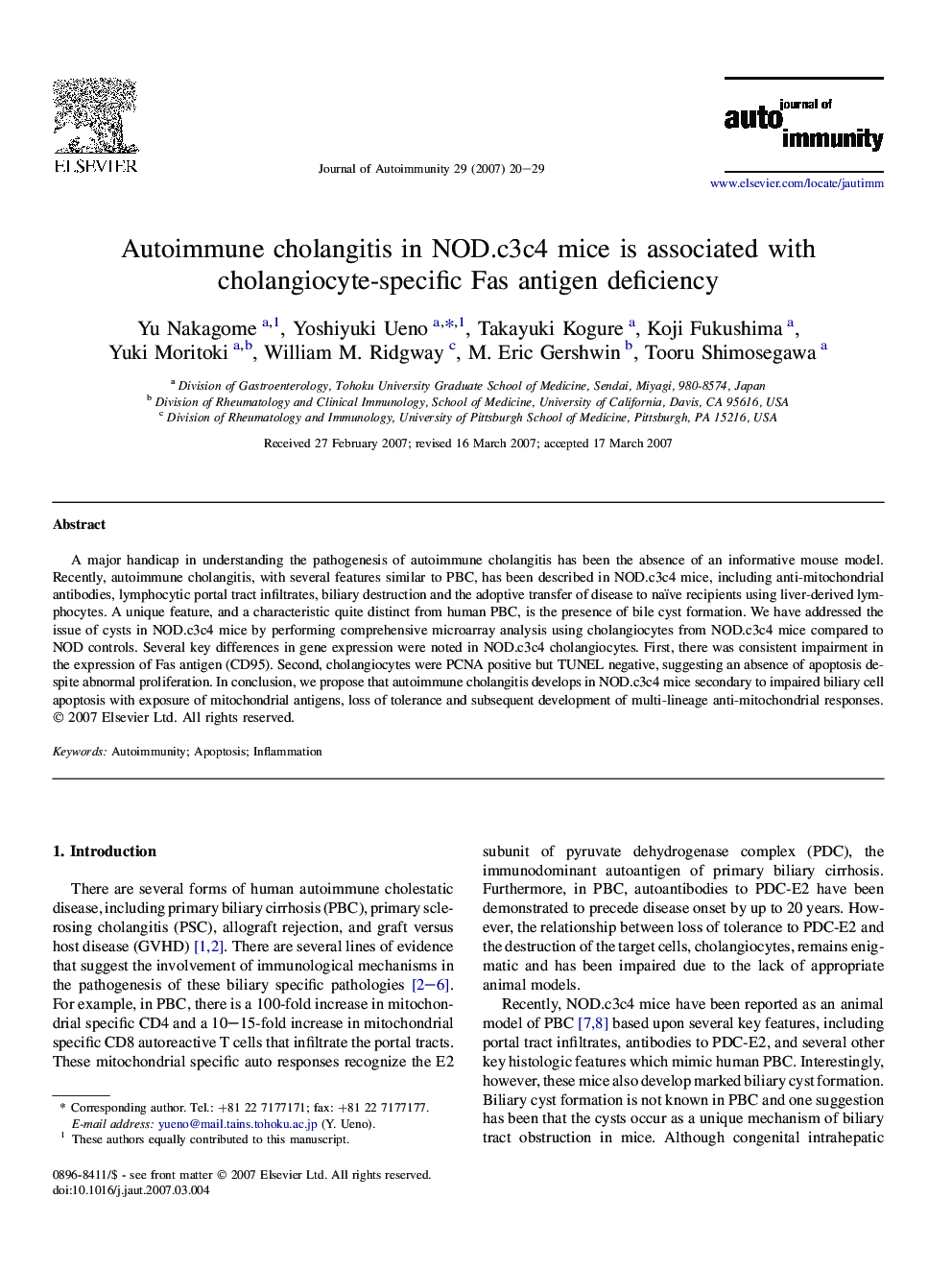| Article ID | Journal | Published Year | Pages | File Type |
|---|---|---|---|---|
| 3368411 | Journal of Autoimmunity | 2007 | 10 Pages |
A major handicap in understanding the pathogenesis of autoimmune cholangitis has been the absence of an informative mouse model. Recently, autoimmune cholangitis, with several features similar to PBC, has been described in NOD.c3c4 mice, including anti-mitochondrial antibodies, lymphocytic portal tract infiltrates, biliary destruction and the adoptive transfer of disease to naïve recipients using liver-derived lymphocytes. A unique feature, and a characteristic quite distinct from human PBC, is the presence of bile cyst formation. We have addressed the issue of cysts in NOD.c3c4 mice by performing comprehensive microarray analysis using cholangiocytes from NOD.c3c4 mice compared to NOD controls. Several key differences in gene expression were noted in NOD.c3c4 cholangiocytes. First, there was consistent impairment in the expression of Fas antigen (CD95). Second, cholangiocytes were PCNA positive but TUNEL negative, suggesting an absence of apoptosis despite abnormal proliferation. In conclusion, we propose that autoimmune cholangitis develops in NOD.c3c4 mice secondary to impaired biliary cell apoptosis with exposure of mitochondrial antigens, loss of tolerance and subsequent development of multi-lineage anti-mitochondrial responses.
